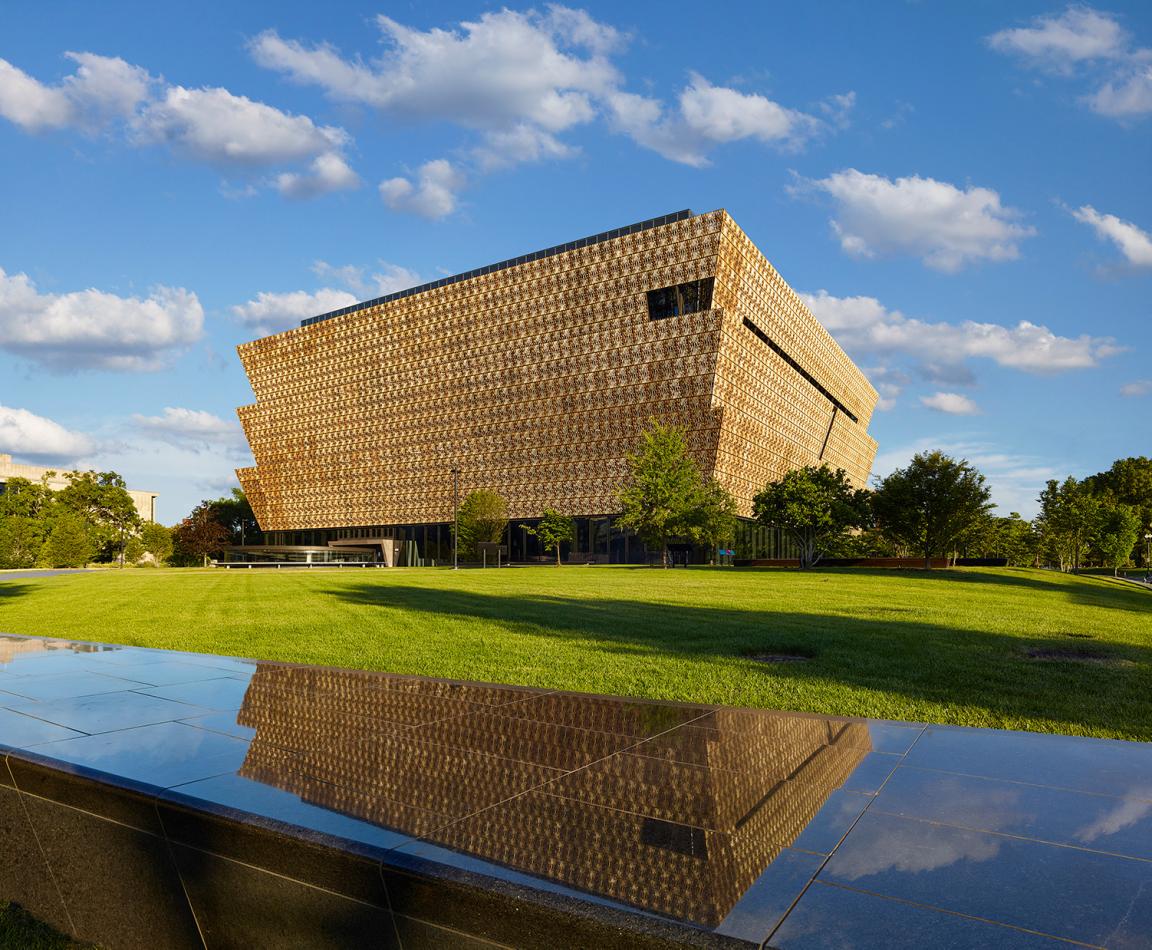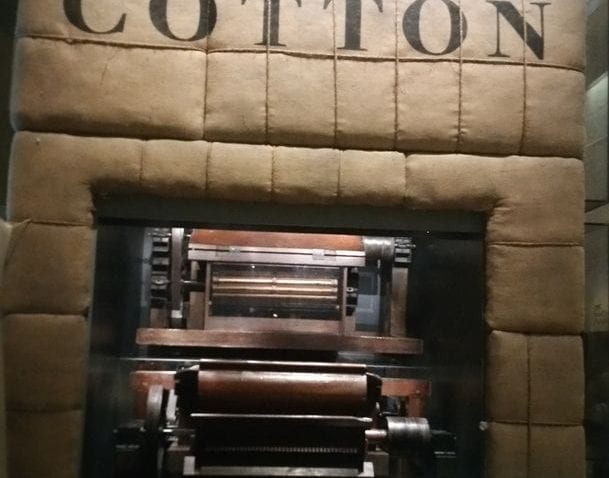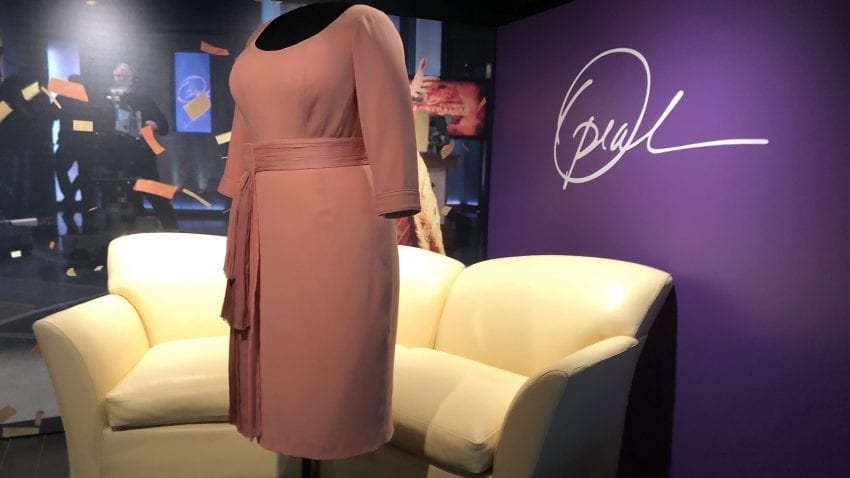
On January 21 our class visited the Smithsonian’s National Museum of African American History and Culture and met with Dr. Reece, a curator of their musical crossroads exhibit. Our walkthrough of the museum progressed from the bottom of the museum to the top. The bottom half of the museum were focused on histories of African Americans experiences in the United States while the top half focused on more modern cultural features like hip hop and music.
The first 2 floors featured images, artifacts, and stories of the crimes against humanity committed during slavery in the United States and the forced migration of Africans to the Americas. While the museum presented very obviously horrible facts and testimonies about death and family separation, at some points it was clear they were trying to make the imagery less graphic and appropriate for everyone.

This was particularly noteworthy with the “King Cotton” exhibit (above) where a Cotton Gin is described as a device which improved productivity of slave labor. While this is true, I was surprised the drawbacks and dangers this device created were not discussed. It was unfortunately common, following the introduction of the Cotton Gin, for people’s arms to be cut off as they operated the machine. [1]
The two further floors of history featured the civil rights movement and an extremely powerful exhibit featuring Emmett Till’s casket, testimonial’s about Dr. Martin Luther King Jr., and President Obama’s historic presidency.

Several modern figures who are considered to be cultural icons are featured in the history section of the exhibit. Oprah contributed many artifacts from her show and set to the exhibit and is featured prominently.
The other cultural icon featured, although more prominently before allegations of sexual assault became widely known, is Bill Cosby [2]. There were numerous calls for the exhibitions featuring him to be removed, however the museum stood by their curatorial decisions to include him arguing Cosby, regardless of if he was a good or a bad person, was influential throughout his career.
The Cosby exhibition came up during our discussion with Dr. Reece, who mentioned briefly the exhibit during a larger discussion about the obligation of the museum to display modern revelations about historic figures. Dr. Reece did not believe she had a satisfying answer, and suggested we think about wether each case should be considered independently, or if some unifying policy should be created which would be able to shield individual staff members from backlash following their decisions.
Our discussion with Dr. Reece turned to discuss a recent question in academia about how black music is American music. I found this discussion particularly interesting after looking at the dance and athletics exhibits. My brother and father are both enthusiastic runners and both follow international track and field competitions closely. There are a handful of legendary runners I have heard them talk about, and one of them is Jesse Owens. Prior to viewing the exhibit on the olympics which discussed Owens’ competition in the 1936 Berlin Olympics, I had no idea that Owens was African American. I am unsure what it says about me and my views of what American track and field runners look like, typically I picture my brother and Dad, however it had not crossed my mind that Owens’ was African American, and his fame was a result of both his athletic ability as well as the statement his success made about equality.
There was additionally several exhibitions on dance, including an interactive lesson about step dancing. I participated in the exhibit and learned for about 10 minutes and found it remarkably familiar. I noticed many of the movements and skills were similar to other forms of couple dancing I have learned: from the importance of maintaining energetic arm movements to the ability to keep balance in your feet by keeping them grounded.
The intersections of cultural activities like dance and athletics considered to be African American by the museum with athletics my German family follows and couple dances I learn at St. Olaf (which isn’t typically a center of African American culture) caused much reflection for me and really does confirm what Dr. Reece said: that African American Culture is American Culture.
[1] https://teachinghistory.org/history-content/ask-a-historian/24411
[2] https://www.usatoday.com/story/news/2016/03/28/upcoming-african-american-museum-sets-record-straight-cosby/82360380/
